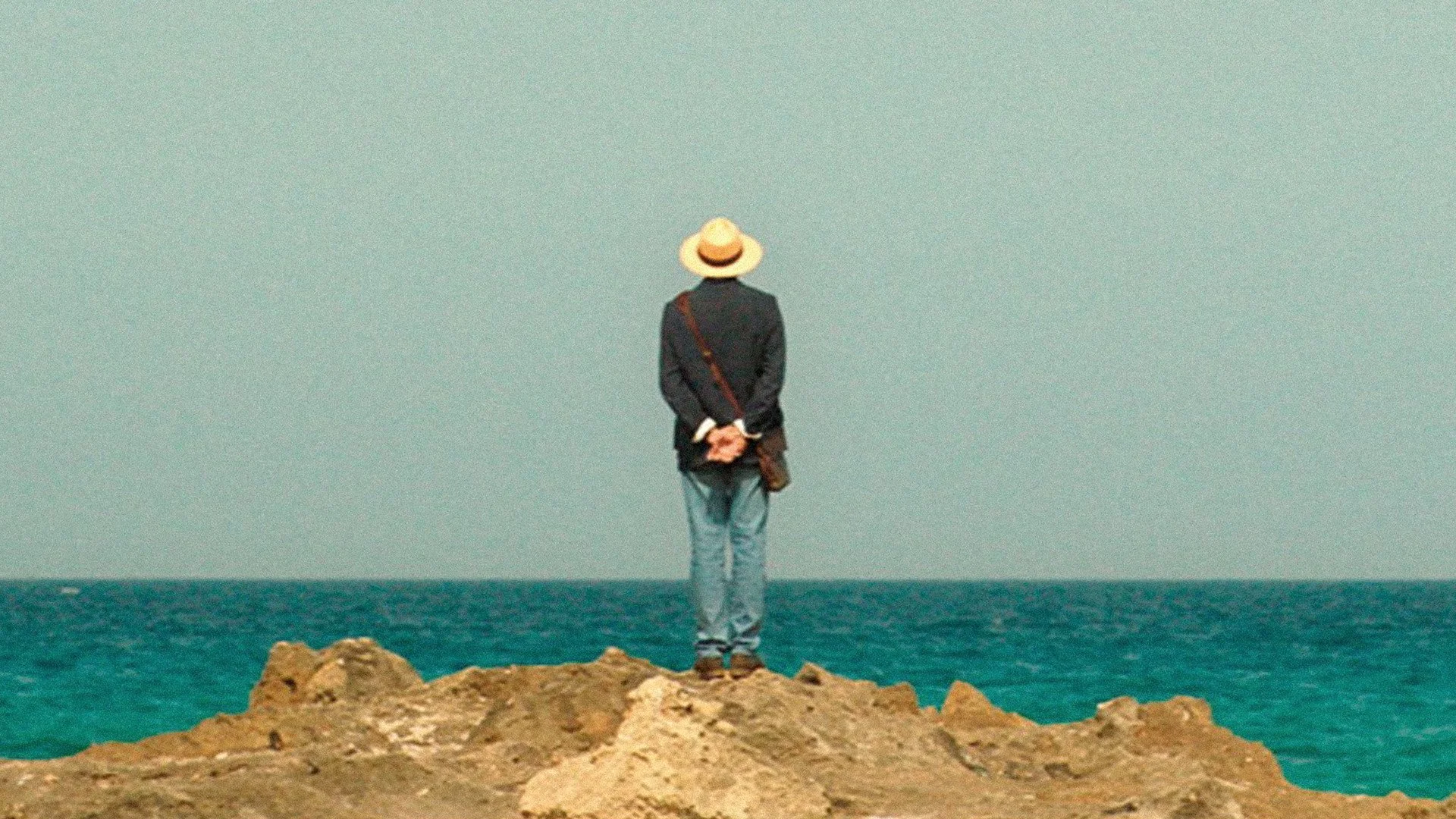The Pessoptimist in Heaven
Elia Suleiman’s film “It Must Be Heaven” is a bittersweet symphony of life, conflict, and displacement. Suleiman’s use of humor and irony highlights his unique style as a filmmaker and dedication to addressing serious issues in a light-hearted manner. “It Must Be Heaven” is an autobiographical comedy in which Suleiman plays a version of himself. The film takes place in three distinct countries: the Middle East (Nazareth), Europe (Paris), and America (New York), each of which has served as “home” for Suleiman in his real life. The film adopts a satirical lens on the world, following Suleiman’s personal journey in search of “heaven”, only to unveil that “hell” exists everywhere.
The film begins in Suleiman’s homeland Nazareth, one of northern Israel’s largest and holiest cities. Due to the geopolitics of the region, the land was systemically seized by Israelis leaving only a small part for Palestinians. In an interview at the (TIFF) the Toronto International Film Festival, Suleiman shares, “This film is about what I have been feeling for a long time, which is following my personal journey, living in different places in the globe, and how the globe becomes one big Palestine, it’s no longer about conflict, it becomes globalized violence.” The opening scene of the film reveals a Greek Orthodox priest persistently knocking on a church door where the custodians refuse to open the door. A peaceful and holly procession leads to a chaotic outburst, as the priest angrily threatens to beat up the custodians. This humorous sequence is symbolic of the religious tensions present in Nazareth, metaphorically suggesting that conflict is self-inflicted and no greater power is coming to save humanity.
Throughout the film, Suleiman travels across the globe not only to satisfy his creativity (funding for his movie) but also to find a sense of belonging. Paris is captured through a charming lens reinforcing the romantic stereotypes associated with the “city of love”. The juxtaposition of stunning young women dressed in exquisite clothing and the sight of policemen and military tanks patrolling the Banque de France is a reminder that violence permits even in the most glamorous cities. When Suleiman reaches New York, he is confronted with the alarming presence of U.S. citizens carrying AK-47s and various dangerous weapons. Pedestrians, store clerks, and children are seen carrying guns as if they were mere accessories. Behind this humorous and exaggerated sequence, Suleiman is critiquing the illusion of freedom and the sad reality of gun violence prevalent in America.
Nazareth serves as a powerful visual metaphor throughout the film, highlighting the privilege and disparities in the region. Suleiman portrays everyday struggles while also highlighting the generosity and grace that permits despite the difficult religious and economic circumstances of the land. The final scene of the movie depicts a group of young people enjoying a lively club, complete with pulsating music and fluorescent lights. This scene was shot in a Palestinian gay and lesbian bar located in Haifa, a city just outside Nazareth. Haifa has emerged as a hub for the younger generation of passionate energetic Palestinians, who express their resistance through cultural expression. Suleiman shares with TIFF that when filming this scene, “I found not only the end of the film but I also found myself in that scene”. The Palestinian club-goers serve as a symbol of hope and aspiration. While the tarot reader in New York predicted that a Palestinian state may not come into existence during Suleiman’s lifetime, the younger generation holds the key to the future or “heaven”.
The Secret Life of Saeed: The Pessoptimist
“The Secret Life of Saeed: The Pessoptimist” by Emile Habiby is set in the 1940s and 1950s when Israel was emerging as a state. Through the protagonist, Saeed, the story unfolds the struggles and complexities of Palestinians living in Israel. Saeed’s journey is based on Habiby’s life experiences, exploring the complexities of his own personal identity in contrast to his homelands. Through the work of humor and irony, the novel highlights the identity crisis of Palestinians inside Israel, and the violence and discrimination Palestinians face. At a young age, Saeed is swept by events into an ugly world, and even into outer space with little agency of his own. He embodies the archetype of the “invisible” man of Israel, unseen, like the rest. “The papers published the names of everyone notable who was caught but merely gave general reference to the rest. The rest—yes, that’s me! I am “the rest.” I am remarkable indeed!”
After the UN proposal (1947) Many of the Arab states, who had just recently won independence themselves, declared war on Israel to establish a unified Arab Palestine where all of British Palestine had been. The new state of Israel won the war. But in the process, they pushed well past their borders under the UN plan, taking the western half of Jerusalem and much of the land that was to have been part of Palestine. They also expelled huge numbers of Palestinians from their homes, creating a massive refugee population whose descendants today number about 7 million.




